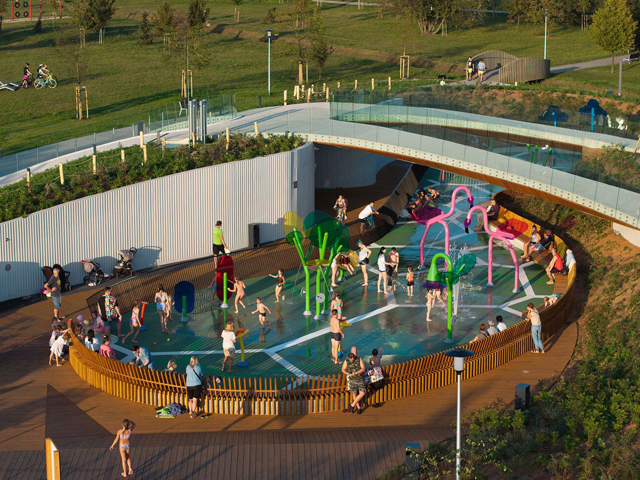‘BACK TO NATURE’ PLAY
18 Mar 2016
Getting kids in touch with nature through play is the basis for this award winning classroom design, which features incorporated plant beds so kids can grow their own food.

‘Great design can bring kids closer to nature’, is the premise for the Hedge School in Ireland. Designed by AP+E architecture studio, the primary school classroom, located in Carlow, Ireland, is made of sustainable materials and placed outside for that ‘back to nature’ experience.




The low-cost timber amphitheater is a playground for sensory immersion that connects kids to nature and offers a wealth of opportunities for learning through interactive play.
A circular design of plywood columns, the Hedge School is located on the school grounds and is surrounded by staggered rows of wooden planters that allow the children to plant and care for their own garden.
Designed to be ‘child-sized’, the interior of the structure is created with plywood platforms that can be used as steps or for seating. A gravel floor provides a durable foundation for little feet, while steel mesh is strung between the columns to support growing vines that will eventually surround the structure with cool greenery.
The multipurpose space is an ideal platform for a range of teaching purposes, including performances, cooking lessons and play time. A year-round planting program keeps the space constantly evolving, allowing for multiple opportunities to observe and care for a growing garden. Raised plant beds offer space for edible plants to grow, providing food for the children that they themselves grew, maintained and harvested.
The architects observe, “Through planting, growing, studying and finally eating their plants the children are not only taught basic skills but more importantly also learn how their actions directly affect their surroundings.”
“The Hedge School is an informal learning space in nature where children are exposed to and learn from the elements,” write the architects. “It is a place where children are educated in the basic principles of living such as growing food and plants, cooking in the open, ecosystems, climate, seasons, flora and fauna. In this way the natural elements become a stimulating part of the space and the experience; creating an engaging and adventurous learning environment; where children can hear the rain and feel the wind.”

MORE NEWS

HOW TO ENSURE YOUR DESIGN COMPLEMENTS THE SURROUNDING ARCHITECTURE

5 IDEAS HOW TO USE PLAY SPACE SLOPES TO YOUR ADVANTAGE

MAKING A SPLASH

PLAYGROUND CELEBRATING ASH BARTY A GRAND SLAM

HOW PLAYCO PLAYGROUND MARKINGS ENHANCE PLAY, LEARNING AND SAFETY

